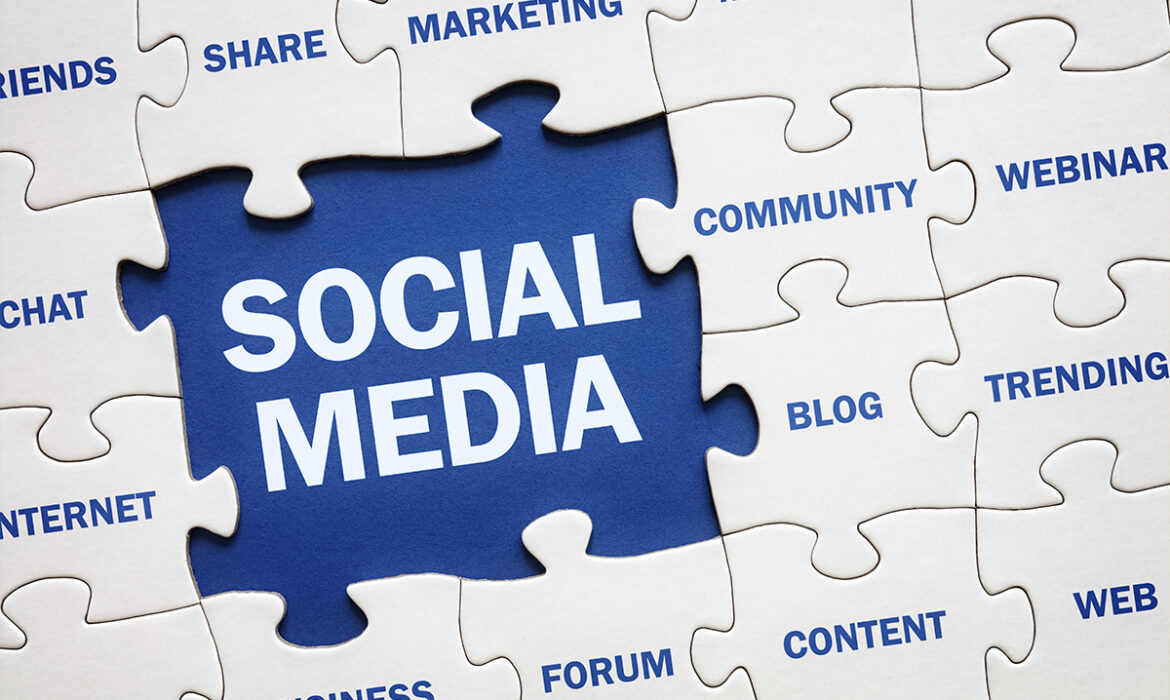How to Create a Digital Marketing Strategy for B2B Businesses
How to Create a Digital Marketing Strategy for B2B Businesses
Creating an effective digital marketing strategy for B2B businesses is crucial in today’s business environment, where digitalization has transformed the way companies interact with each other. By adopting a well-planned approach, businesses can not only increase their online visibility but also generate quality leads that translate into sales. This digital marketing strategy should encompass various tactics that align with the business goals and needs of your target audience.
One of the first steps when developing a digital marketing strategy for B2B businesses is to identify your target audience. Understanding who your ideal customers are, what their challenges are, and how your product or service can solve those problems is critical. By creating detailed buyer personas, businesses can customize their messaging and campaigns to address the specific needs of each segment. This customer-centric approach allows for more effective communication and improves conversion rates.
Content plays a central role in any digital marketing strategy. Creating relevant and valuable content that informs and educates your audience is essential to establishing credibility and authority in your industry. B2B companies can benefit from creating blogs, case studies, infographics, and videos that address topics important to their audience. Plus, quality content will not only attract potential customers, but will also foster engagement and loyalty from existing customers.
Social media is another powerful tool within a digital marketing strategy. Platforms like LinkedIn are especially effective for B2B companies as they allow for networking and direct interaction with other industry professionals. Sharing relevant content, participating in discussion groups, and establishing meaningful relationships are all ways to increase visibility and build a community around your brand. It’s important to choose the right platforms and adapt to the type of content expected on each to maximize impact.
SEO (search engine optimization) is an integral part of any digital marketing strategy. Ensuring your website is optimized for search engines increases the likelihood that potential customers will find your business when searching for relevant solutions. This includes keyword research, optimizing site structure, and creating content that answers your audience’s search queries. Ranking well in search results can significantly increase traffic and, ultimately, conversions.
The use of email marketing should also be considered in a digital marketing strategy for B2B businesses. This tactic allows companies to communicate directly with their leads and customers, offering valuable information, promotions, and updates about products or services. By segmenting their mailing lists and personalizing content, companies can increase the relevance of their messages and encourage engagement. Additionally, email automations can help nurture leads throughout the sales funnel, guiding them toward conversion.
Data analysis is essential to assess the effectiveness of any digital marketing strategy. Businesses should establish key metrics to measure the performance of their campaigns, such as email open rates, web traffic, and lead generation. Using analytics tools will allow businesses to understand which tactics are working and which ones need adjustments. This process of continuous analysis and optimization is essential to improving results and ensuring long-term success.
Collaboration and networking are also vital components of a digital marketing strategy for B2B businesses. Attending industry conferences, seminars, and events can provide valuable opportunities to network and learn from other industry leaders. These interactions can lead to collaborations, referrals, and new business opportunities, enriching a company’s network of contacts and expanding its market reach.
Implementing a successful digital marketing strategy requires a long-term commitment and adaptability to market trends and changes. B2B companies must be willing to experiment with different tactics, learn from their experiences, and adjust their strategies accordingly. Flexibility and a willingness to evolve are key characteristics that can make all the difference to a company’s performance in a highly competitive environment.
Developing an effective digital marketing strategy for B2B businesses is not just a promotional exercise, but an investment in the long-term relationship with customers. By focusing on offering value and solutions to their challenges, businesses can build a strong base of loyal customers that will support their growth and success in the future.
How to Create a Successful Crowdfunding Campaign
How to Create a Successful Crowdfunding Campaign
Crowdfunding has become a powerful tool for entrepreneurs, artists and organizations seeking funding without resorting to traditional methods such as loans or private investors. However, creating a successful crowdfunding campaign requires strategic planning, precise execution and effective communication with potential backers.
The first step to an effective crowdfunding campaign is to define a clear and achievable goal. It is crucial that the amount you need to raise is based on a detailed budget that explains exactly how the funds will be used. Not only does this provide transparency to your potential donors, but it also gives them confidence that their contribution will be used responsibly. Plus, having a clear goal makes it easier to set milestones and rewards as the goal approaches.
The next crucial stage is telling a compelling story. A crowdfunding campaign that has an emotional or inspiring narrative is more likely to capture people’s attention. You need to convey the passion you feel for your project and explain why it’s important. Donors often support causes where they feel they can make a difference, so a personal story can make your campaign memorable. Using images, videos, and testimonials is a great way to humanize your message and make your pitch more appealing.
Promotion is another key pillar for success. It’s not enough to just launch a campaign and hope that people will discover it on their own. You need to actively promote your crowdfunding on social media, blogs, forums, and any platform where your target audience is. Building a community around your campaign is essential to build momentum. You can send regular updates through email newsletters or social media to keep potential donors engaged and remind them that they can still contribute. Also, consider collaborating with influencers or influencers in your niche to increase the visibility of the campaign.
Offering attractive incentives or rewards is another effective strategy to capture the attention of backers. People will be more willing to contribute if they know they will receive something in return. These rewards can be exclusive products, public mentions, personalized experiences, or any other benefit that is related to your project. Make sure that the rewards are proportional to the amount that backers are contributing and that they are unique to your crowdfunding campaign.
Transparency and ongoing communication are essential during and after the campaign. Keep your backers informed about the progress of the project, even if the campaign has already ended. Regular updates not only reinforce confidence in your ability to deliver on your promises, but also help build a long-term relationship with your backers, which could benefit you in future projects or crowdfunding campaigns.
Creating a successful crowdfunding campaign involves more than just asking for money. You need to have a clear goal, tell a story that resonates with people, actively promote your campaign, offer attractive rewards, and maintain open communication with your backers. By following these steps, you’ll be in a better position to achieve your goals and successfully fund your project.
Strategies to Improve Your Brand Visibility on Google
Strategies to Improve Your Brand Visibility on Google
Improving your brand’s visibility on Google is crucial in today’s digital environment, where competition for online attention is fierce. Brands that don’t stand out in search results are less likely to capture the attention of their target audience. However, there are several strategies that can help increase visibility on this influential search engine.
One of the top strategies for improving your brand’s visibility on Google is to optimize your website for search engines (SEO). SEO encompasses a variety of practices that help your website appear higher in search results. This includes keyword research, which involves identifying the terms your audience is searching for and making sure those terms appear in your site’s content. Additionally, you should make sure your site is fast, secure, and mobile-friendly, as Google prioritizes these factors in its ranking algorithm.
High-quality content is also crucial to improving your brand visibility . Publishing informative articles, blogs, and videos that solve problems or answer common questions in your industry will drive traffic to your website. By providing value to users, they are more likely to engage with your content, which increases your relevance in the eyes of Google. Additionally, using the right keywords within your content can significantly improve your ranking in search results.
Another key strategy is link building. Google values sites that are referenced by other quality websites. By getting other pages to link to yours, you are showing Google that your content is relevant and trustworthy. You can do this by collaborating with other blogs, participating in forums in your industry, or creating content so valuable that other websites will naturally share it.
It’s also important to maintain your presence on Google My Business. For local brands, having a well-optimized business listing on Google My Business is essential to appearing in local search results and on Google Maps. Make sure all contact information is up to date, encourage your customers to leave reviews, and post regular updates to this profile. This type of interaction improves your brand visibility and builds trust with potential customers.
Optimizing images and videos can also increase your brand’s visibility. Google not only displays text results, but also images and videos in searches. Make sure to tag your images with relevant, quality descriptions, and upload useful videos to platforms like YouTube, which is owned by Google. This will give you a greater chance of appearing in a variety of types of results.
Being active on social media can indirectly improve your brand’s visibility on Google. While social media doesn’t directly affect search rankings, content shared on these platforms can drive traffic to your website. The more traffic your site receives, the higher its relevance and, potentially, its position in Google’s search results.
To improve your brand visibility on Google, it is essential to combine SEO strategies, quality content, link building, local profile optimization, and active social media engagement. By doing so, you will increase your visibility and attract more quality traffic to your website, which can translate into further growth for your business.
How to Use Emotional Marketing to Connect with Your Audience
How to Use Emotional Marketing to Connect with Your Audience
Emotional marketing has become a powerful tool for brands looking to create deeper, more authentic connections with their audience. Rather than focusing solely on the tangible benefits of a product or service, this approach appeals to the consumer’s emotions, generating loyalty and fostering a long-term relationship with the brand.
Emotions play a crucial role in purchasing decisions. People don’t just buy products for their utility, but also for how they make them feel. Emotional marketing explores this aspect by identifying which key emotions a brand wants to evoke in its audience. These emotions can range from happiness and surprise to fear or nostalgia, depending on the message you want to convey.
One of the first steps to implementing emotional marketing is to deeply understand your audience. To connect emotionally, it is essential to know what they care about, what they value, and what motivates them. This information will allow your campaign to be aligned with their wants and needs, making it more effective and relevant. Market research and data analysis can be useful tools to obtain this information.
Storytelling is another fundamental component of emotional marketing. Stories have the power to touch people’s hearts, create connections, and generate empathy. When a brand tells a story that resonates with its audience’s personal experiences, that audience is more likely to feel emotionally connected and, as a result, identify with the brand. Successful stories are often authentic, human, and reflect shared values with the audience.
It is also important for brands to maintain consistency in their emotional message. Emotional marketing campaigns must be consistent with the brand’s values and identity. If a brand projects a strong emotional image, but then its actions do not reflect that same emotion, the audience may feel disappointed or distrust the brand’s authenticity. Therefore, it is crucial that emotional values are present in every customer interaction, from advertising to after-sales service.
The proper use of images, music and colours is essential to enhance the impact of emotional marketing. Visual and sound elements play an important role in how people perceive a message. For example, inspiring music can evoke feelings of hope, while warm colours can convey closeness and comfort. The design of the campaign must be carefully selected to amplify the desired emotions.
Emotional marketing is not only effective in attracting new customers, but also in strengthening the relationship with existing ones. By generating a positive emotional response, consumers are more likely to feel loyalty towards the brand and recommend it to others. This emotionally charged word of mouth can be one of the most valuable assets for any business.
Emotional marketing is an effective strategy to connect with the audience on a deeper level. Through understanding emotions, telling powerful stories, consistency in messaging, and the proper use of visual and audio elements, brands can create a lasting emotional connection with their customers.
The Impact of Olfactory Marketing on Customer Experience
The Impact of Olfactory Marketing on Customer Experience
Scent marketing has gained increasing attention in the world of retail and advertising. This strategy uses specific scents to influence consumer emotions and behaviors, creating an environment that not only attracts customers but also enhances their overall experience. By incorporating scent marketing into the design of retail spaces, brands can awaken memories, evoke emotions, and establish a deeper connection with their customers.
The senses play a crucial role in making purchasing decisions, and smell is one of the most powerful. Research has shown that scents can affect our mood and perception. For example, a fresh, clean scent can make a customer feel more relaxed and comfortable, while a pleasant smell can increase a consumer’s willingness to stay longer in a store. Implementing scent marketing allows companies to create an environment that encourages purchasing, resulting in increased sales and customer satisfaction.
One of the benefits of scent marketing is its ability to differentiate a brand from its competitors. By using unique and memorable scents, companies can establish an olfactory identity that is directly associated with their brand. Not only does this help consumers remember the experience, but it can also influence their preference for that particular brand. For example, a clothing store that uses a light floral scent can create an atmosphere of freshness and elegance, which can make customers more inclined to choose that store over others.
Olfactory marketing also plays an important role in creating a welcoming atmosphere. In places like restaurants, spas, and luxury stores, pleasant scents can enhance the customer experience and foster a sense of well-being. Not only does this approach increase customer satisfaction, but it can also lead to greater brand loyalty. Customers who associate a particular scent with a positive experience are more likely to return and recommend the brand to others. This positive feedback loop is critical to the growth of businesses that implement olfactory marketing strategies.
An interesting aspect of scent marketing is its ability to trigger memories. Smells are intimately linked to our memories, and a specific scent can instantly evoke past experiences. Brands can take advantage of this emotional connection by selecting scents that resonate with their consumers. For example, a scent reminiscent of childhood, such as freshly baked cookies, can make customers feel nostalgic and comfortable, which could increase their likelihood to purchase. The emotional relationship formed through scents is a powerful tool that companies should consider when developing their marketing strategies.
Olfactory marketing is not only limited to physical stores. It can also be used on digital platforms. Innovative brands have begun to explore the use of scents in product packaging or at events, creating a multi-sensory experience. By receiving a package that emits a pleasant aroma, the customer not only feels satisfied with the purchase, but also creates a positive association with the brand. This highlights how olfactory marketing can extend the customer experience beyond the point of sale, integrating scent as an essential part of the brand experience.
Implementing a scent marketing strategy requires careful consideration. Companies must research and select scents that align with their brand identity and resonate with their target audience. Additionally, it is crucial to maintain consistency in scent application to prevent customers from feeling confused or overwhelmed. A well-executed approach will not only improve customer experience but also increase the effectiveness of marketing campaigns.
Scent marketing doesn’t just benefit businesses; it also offers benefits to consumers. By creating a more pleasant and welcoming environment, consumers can enjoy a more satisfying shopping experience. This, in turn, can positively influence their purchasing decisions and foster a stronger relationship with the brand.
Scent marketing has become a valuable tool for companies looking to improve the customer experience. By using scents strategically, brands can evoke emotions, create memories, and differentiate themselves in a competitive marketplace. Careful implementation of this technique can lead to an increase in customer satisfaction and sales, making scent marketing an essential component in any company’s strategy.
The Role of Virtual Events in Modern Marketing Strategies
The Role of Virtual Events in Modern Marketing Strategies
In today’s marketing landscape, virtual events have established themselves as a powerful tool to connect with global audiences, generate leads, and strengthen brand presence. Ranging from webinars and online conferences to virtual product launches, these virtual events have revolutionized the way businesses engage with their customers and prospects. Below, we’ll explore how virtual events play a crucial role in modern marketing strategies and how they can be leveraged for maximum impact.
One of the main advantages of virtual events is their ability to reach a global audience without the physical limitations of in-person events. By removing geographical barriers, companies can attract participants from different parts of the world, significantly expanding their reach. This ability to reach a wider audience also allows brands to position themselves in international markets and build a global presence. Additionally, virtual events are often more accessible and less expensive than in-person events, as they eliminate expenses associated with logistics, transportation, and accommodation.
Virtual events also offer an excellent opportunity to generate qualified leads and collect valuable data about attendees. Through registration tools and surveys, companies can capture contact information and details about attendees’ interests and needs. This information can be used to personalize future marketing campaigns, segment audiences, and nurture relationships with prospects. Additionally, interaction during the event, such as participating in chats and Q&A sessions, provides direct insight into potential customers’ concerns and preferences.
In terms of content, virtual events allow companies to offer interactive and enriching experiences that can keep attendees engaged. Event formats such as webinars, online workshops, and panel discussions make it easy to present information in a dynamic and participatory manner. Incorporating interactive elements, such as live polls, Q&A sessions, and discussion forums, can increase engagement and provide a more valuable experience for participants. Additionally, virtual events allow for the recording and distribution of content, giving attendees the ability to review information on their own time, thereby extending the lifespan of the content presented.
Another significant advantage of virtual events is their ability to facilitate community and networking around specific topics. Online events allow participants to connect with people who share similar interests, creating opportunities for collaboration and the exchange of ideas. Networking tools on virtual event platforms, such as chat rooms and discussion groups, facilitate interaction between attendees and encourage the building of professional relationships. This ability to connect people with common interests can also strengthen loyalty and a sense of belonging towards the organizing brand.
Virtual event tracking and analytics provide businesses with a rich source of data to measure success and optimize future strategies. Virtual event platforms typically offer analytics tools that allow you to track key metrics such as attendance, engagement time, and interaction. This data can help you evaluate the effectiveness of the event, identify areas for improvement, and adjust your marketing strategy accordingly. For example, if you notice that certain topics are generating more interest and engagement, businesses can focus their future virtual events on those topics to maximize impact.
For a virtual event to be successful, it is crucial to plan and execute with attention to detail. From selecting the right platform to effectively promoting the event, every aspect must be carefully managed to ensure a smooth and professional experience. Virtual event promotion should include digital marketing strategies, such as emails, social media posts, and online advertising, to attract a relevant audience. Additionally, preparing and rehearsing the presentations and technology used at the event will help avoid technical issues and ensure a seamless experience for attendees.
Virtual events play an essential role in modern marketing strategies by offering a platform to reach global audiences, generate qualified leads, deliver interactive content, and build communities. By leveraging these opportunities and planning carefully, businesses can maximize the impact of their virtual events and strengthen their position in the market. The ability to connect with audiences around the world and provide valuable, engaging experiences makes virtual events an indispensable tool in any company’s marketing arsenal.
How to Build an Online Community Around Your Brand
How to Build an Online Community Around Your Brand
In today’s digital world, building an online community around your brand is a powerful strategy to foster loyalty, increase visibility, and create an authentic bond with your customers. An online community not only provides a space for customers to interact with your brand, but it also offers a platform to share ideas, solve problems, and build lasting relationships. Below, we’ll explore how you can build and maintain a successful online community around your brand.
The first step to building a strong online community is to clearly define your brand’s values and mission. Your community should be aligned with your company’s core principles and reflect the interests and passions of your target audience. By defining your values and mission, you establish a foundation on which to build an online community that is genuinely interested in what you offer. This approach also helps attract people who share your values and are willing to actively participate in your community.
Once you’re clear on your brand values, it’s crucial to choose the right platforms to build your online community. There are a variety of platforms where you can create and manage communities, such as social networks, forums, online groups, and communities on your own website. Choosing the right platform will depend on where your target audience is located and what kind of interaction you want to encourage. For example, if your audience is active on Facebook, creating a Facebook group can be a great option. On the other hand, if you’re looking for a more specialized platform, you might consider creating a forum on your own website.
Creating relevant and valuable content is critical to keeping your online community engaged and active. Offering content that is informative, entertaining, or useful to your audience will help maintain interest and encourage participation. Consider sharing articles, videos, tutorials, infographics, and other types of content that resonate with your community’s needs and interests. Additionally, regularly participating in discussions and responding to comments and questions from community members is also crucial to maintaining active and positive interaction.
Encouraging active participation within your online community is key to its growth and success. Encourage members to share their experiences, ask questions, and contribute ideas. You can host online events, such as webinars, Q&A sessions, and contests, to encourage participation and maintain interest. Additionally, recognizing and highlighting the contributions of your most active members can motivate others to participate and contribute more meaningfully.
Authenticity is an essential factor in building a strong online community. Community members should feel like they are interacting with a brand that is genuine and transparent. Share stories behind your brand, show the human face of your company, and be honest about your goals and challenges. This authenticity will help build trust and loyalty between community members and your brand.
Additionally, listening and responding to comments and suggestions from members of your online community is vital to maintaining a positive relationship. Make sure you are attentive to your members’ needs and concerns and show that you value their opinion. Not only will this feedback help you improve your products or services, but it will also strengthen the relationship between your brand and your community.
Consistency in your communication and engagement is another key to a successful online community . Keep a constant focus on your values and mission and make sure all of your interactions reflect your brand identity. Consistency also extends to the frequency and quality of the content you share. Posting regularly and maintaining high quality standards will help maintain interest and engagement in your community.
Measure and analyze the performance of your online community to assess its success and identify areas for improvement. Use analytics tools to monitor your community’s activity, engagement, and growth. This information will allow you to adjust your strategy and make informed decisions to continue developing a thriving and active online community.
Building an online community around your brand requires a combination of clarity in values, choosing the right platforms, creating valuable content, encouraging engagement, authenticity, active listening, and consistency. By implementing these strategies, you can develop a loyal and engaged community that not only supports your brand but also contributes to its growth and success. A well-managed online community can become a valuable asset for your business, providing a space for meaningful interaction and strengthening your relationship with your customers.
The Benefits of Offering Free Trials and Demos
The Benefits of Offering Free Trials and Demos
In the competitive world of marketing and sales, offering free trials and demos has become an effective strategy to attract and convert new customers. Not only does this tactic allow potential customers to directly experience a product or service, but it also offers a number of key benefits for businesses that implement it correctly. From building trust to increasing conversion rates, the benefits of offering free trials and demos are significant and multifaceted.
One of the main benefits of offering free trials and demos is the opportunity to show the real value of a product or service. Consumers often have doubts about whether an offering will meet their expectations or solve their problems. By providing a free trial, you allow them to experience the product without financial commitment, which can help dispel their doubts. For example, in the case of software, a free demo allows users to explore the program’s features and functionality, seeing for themselves whether it meets their needs. This direct experience can be instrumental in making potential customers feel confident about making a purchase.
Offering free trials and demos can help build trust between your brand and consumers. In a market saturated with options, trust plays a crucial role in making purchasing decisions. By allowing customers to try a product risk-free, you demonstrate that you are confident in its quality and effectiveness. This transparency can create a positive impression and generate a perception of honesty and commitment to customer satisfaction. Consumers who feel valued and respected are more likely to become loyal customers.
Another significant advantage of free trials and demos is the potential to increase conversion rates. When consumers have the opportunity to try a product before purchasing it, they are more likely to be convinced of its value and commit to making a purchase. This approach can reduce friction in the decision-making process and overcome barriers that potential customers may have. Additionally, a positive experience during the free trial can increase the likelihood that users will recommend the product to others, thus amplifying the brand’s reach and visibility.
Using free trials and demos also offers valuable data and feedback for businesses. During the trial period, businesses can gather information about how customers interact with the product, identify areas for improvement, and adjust their marketing strategy as needed. This feedback can provide crucial insights into the features users value most, the problems they encounter, and potential opportunities to improve the offering. Additionally, by analyzing usage data during the trial, businesses can identify patterns and trends that help them optimize their product or service to better meet market needs.
Another major benefit is the increase in qualified lead generation. By offering a free trial, you can attract interested and engaged consumers who are closer to making a purchasing decision. These qualified leads have a higher chance of converting into paying customers, as they have already demonstrated a genuine interest in the product. Additionally, once users have experienced the quality of the product during the trial, they are more inclined to consider a purchase, which makes the conversion process easier and can shorten the sales cycle.
In the context of B2B (business-to-business) sales, free demos can be particularly effective. Companies often have more complex decision-making processes and long approval chains. Offering a free demo allows decision-makers to evaluate the product in a real-world environment and discuss its benefits with other team members. This hands-on test can speed up the decision process and increase the likelihood of closing a sale. Additionally, in the B2B arena, demos can be customized to address the specific needs of each company, further reinforcing the value of the offering.
For a successful free trial and demo strategy, it’s crucial to design an engaging and frictionless user experience. Make sure the process of signing up and accessing the trial is simple and quick. Provide support and resources that help users get the most out of their trial, such as tutorials, guides, and technical assistance. The experience during the trial should be positive and aligned with customer expectations, as this influences the overall perception of the product and the brand.
Offering free trials and demos presents numerous benefits for businesses, including the ability to showcase product value, build trust, increase conversion rates, gain valuable feedback, and generate qualified leads. By implementing this strategy effectively, businesses can significantly improve their ability to attract and convert customers, optimize their offerings, and strengthen their market presence. The key is to offer a trial experience that is clear, useful, and aligned with consumer needs and expectations.
How to Use Data Visualization in Marketing Presentations
How to Use Data Visualization in Marketing Presentations
In the world of marketing, the ability to present data clearly and persuasively can make the difference between a successful strategy and one that fails to capture attention. Data visualization has become an essential tool in marketing presentations, helping to transform complex information into graphical representations that are easy to understand and more impactful for the audience. Knowing how to use data visualization effectively in your presentations can improve the communication of your ideas, support your arguments with solid evidence, and capture your audience’s interest more effectively.
One of the main benefits of data visualization is its ability to simplify complex information. Numerical data and statistics can be overwhelming when presented in the form of text or lengthy tables. By converting this data into graphs, charts, or maps, you can make key information easier to understand. For example, a bar chart can clearly illustrate comparisons between different market segments, while a pie chart can show the percentage distribution of a variable. This simplification allows your audience to quickly grasp relevant trends and patterns without having to interpret raw data.
Another advantage of data visualization is its ability to highlight the stories behind the numbers. Data alone can be impersonal and difficult to relate to, but by integrating it into visualizations, you can tell a compelling story. For example, a line chart showing sales growth over time can not only inform about the trend, but also suggest seasonal factors or events that have influenced performance. By using data visualization to tell stories, you can make information more relevant and memorable to your audience.
Design is crucial when it comes to data visualization in marketing presentations. It’s important to select the type of chart or visualization that best suits the type of data you’re presenting and the message you want to communicate. Using colors, labels, and legends effectively helps ensure that your audience can correctly interpret the information. Additionally, maintaining a clean design and avoiding overuse of graphical elements can prevent cognitive overload and help your message be communicated more clearly. Simplicity and clarity should be top priorities when designing your visualizations.
To get the most out of data visualization, it’s essential to choose the right tools that make it easy to create charts and visualizations. There are a number of software tools and platforms that allow you to create professional and customized data visualizations, such as Tableau, Power BI, and Google Data Studio. These tools offer a variety of options for creating interactive charts, dashboards, and other types of visualizations that can enrich your presentations. Additionally, many of these tools allow you to integrate data in real time, which can be particularly useful for displaying up-to-date and relevant information.
Data visualization can also improve engagement during presentations. By incorporating interactive charts and dashboards into your presentations, you can allow your audience to explore data autonomously. For example, in an online presentation, attendees can interact with a chart to view additional details or filter information based on their interests. This interactivity not only increases engagement, but also allows your audience to get answers to specific questions they may have about the data presented.
It’s critical to remember that data visualization should be used to support, not replace, your narrative. Visualizations should complement your arguments and provide visual evidence to support your main points. Avoid the temptation to overload your slides with too many visualizations or data. Instead, select the visualizations that best illustrate the most important aspects of your presentation and make sure that each chart or diagram has a clear and specific purpose.
It’s important to prepare your visualizations ahead of time and practice how you’ll present them. Make sure you have a good understanding of the data you’re showing and how each visualization contributes to your overall message. Practicing your presentation will allow you to speak confidently about the data and answer audience questions effectively. Proper preparation helps ensure that your data visualization has the desired impact and that your audience can understand and appreciate the information presented.
Using data visualization in marketing presentations can transform the way you communicate complex information and capture your audience’s attention more effectively. By simplifying information, telling compelling stories, designing clear visualizations, and using appropriate tools, you can significantly improve the effectiveness of your presentations. Remember, the key is to use visualizations to support your narrative and provide visual evidence to back up your arguments. With well-executed data visualization , you can make your presentations more persuasive, informative, and memorable.
The Impact of Geofencing on Marketing for Local Businesses
The Impact of Geofencing on Marketing for Local Businesses
In today’s digital age, geofencing has emerged as a powerful tool for local business marketing. This innovative approach allows businesses to send targeted messages and offers to consumers based on their real-time location. Through geofencing technology, local businesses can create more effective and personalized marketing strategies that not only attract new customers but also foster loyalty and engagement of current customers.
Geofencing uses location technology to establish virtual boundaries around a physical location. When a user enters or leaves these boundaries, automated actions are triggered, such as sending push notifications, text messages, or emails. This ability to reach consumers with relevant messages at exactly the right time is a significant advantage in local marketing. By implementing a geofencing strategy, local businesses can capture the attention of potential customers right when they are near their location, increasing the likelihood that they will make a visit or purchase.
One of the key benefits of geofencing is the ability to send targeted offers and promotions based on a customer’s location. For example, if a consumer is near a coffee shop, they may receive a special offer for a free or discounted drink. This personalization not only draws customers into the store, but also improves the customer experience by offering relevant promotions. Additionally, geofencing allows local businesses to track customer responses to these offers, providing valuable data on the effectiveness of marketing campaigns and allowing for real-time adjustments.
The impact of geofencing also extends to improving customer loyalty. By sending exclusive offers to customers who have already visited a store, businesses can incentivize repeat visits. For example, a restaurant can offer a discount to customers who return within a week. This technique not only increases repeat visits, but also fosters a closer relationship between the business and its customers. By feeling that the offers are personalized and based on their preferences and behaviors, customers feel valued and are more likely to become loyal customers.
Geofencing allows local businesses to run effective remarketing campaigns. If a customer has shown interest in products or services but has not made a purchase, geofencing can send reminders and offers when the customer is near the store. This strategy increases the chances of conversion by keeping the brand top of mind for the consumer right when they are in the area. It also allows businesses to adjust their messaging and offers based on the customer’s location and behavior, improving the relevance and effectiveness of campaigns.
A crucial aspect of geofencing is its ability to provide detailed data on customer behavior. Local businesses can collect information on frequency of visits, time spent in-store, and response to offers sent. This data is valuable for better understanding customer behavior and for adjusting marketing strategies accordingly. For example, if data shows that customers tend to visit the store during certain hours of the day, the business can schedule special offers for those times, thereby maximizing the effectiveness of its campaigns.
Effective geofencing implementation requires careful planning. It is important to set geofencing boundaries so that they are precise enough to reach relevant customers without being too intrusive. Businesses must ensure that notifications and offers are perceived as valuable and relevant, rather than annoying. A successful geofencing strategy relies on a deep understanding of the customer profile and creating personalized messages that truly resonate with their needs and preferences.
Geofencing also presents opportunities to collaborate with other local businesses. For example, businesses can form partnerships with neighboring stores to send joint offers to customers passing through the area. This strategy not only increases visibility and reach, but also encourages greater collaboration within the local business community.
Geofencing has a significant impact on marketing for local businesses by allowing for precise, real-time personalization of offers and communications. By using this technology effectively, businesses can attract new customers, retain existing ones, and collect valuable data to improve their marketing strategies. With the ability to send relevant messages at the right time and offer personalized promotions, geofencing positioned as an indispensable tool for local businesses looking to stand out in a competitive market.













